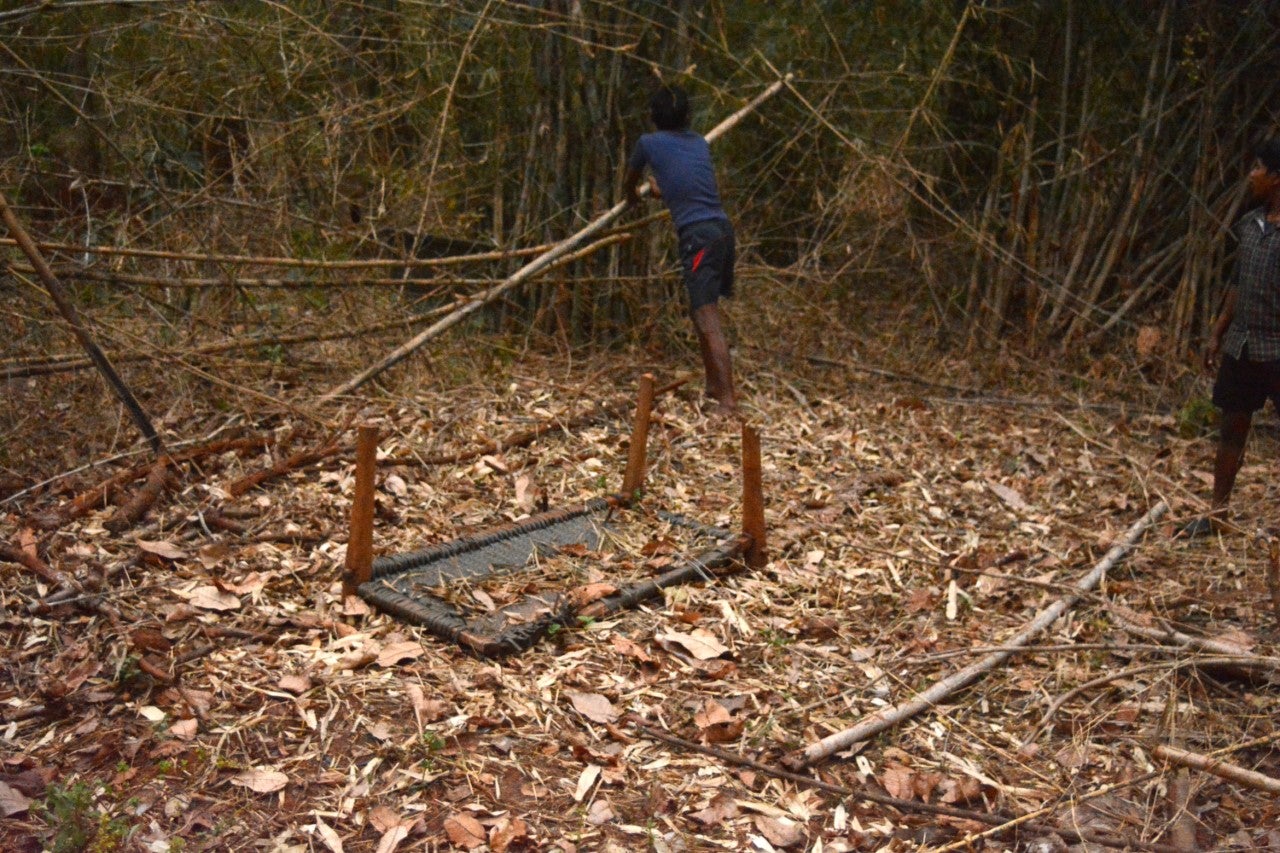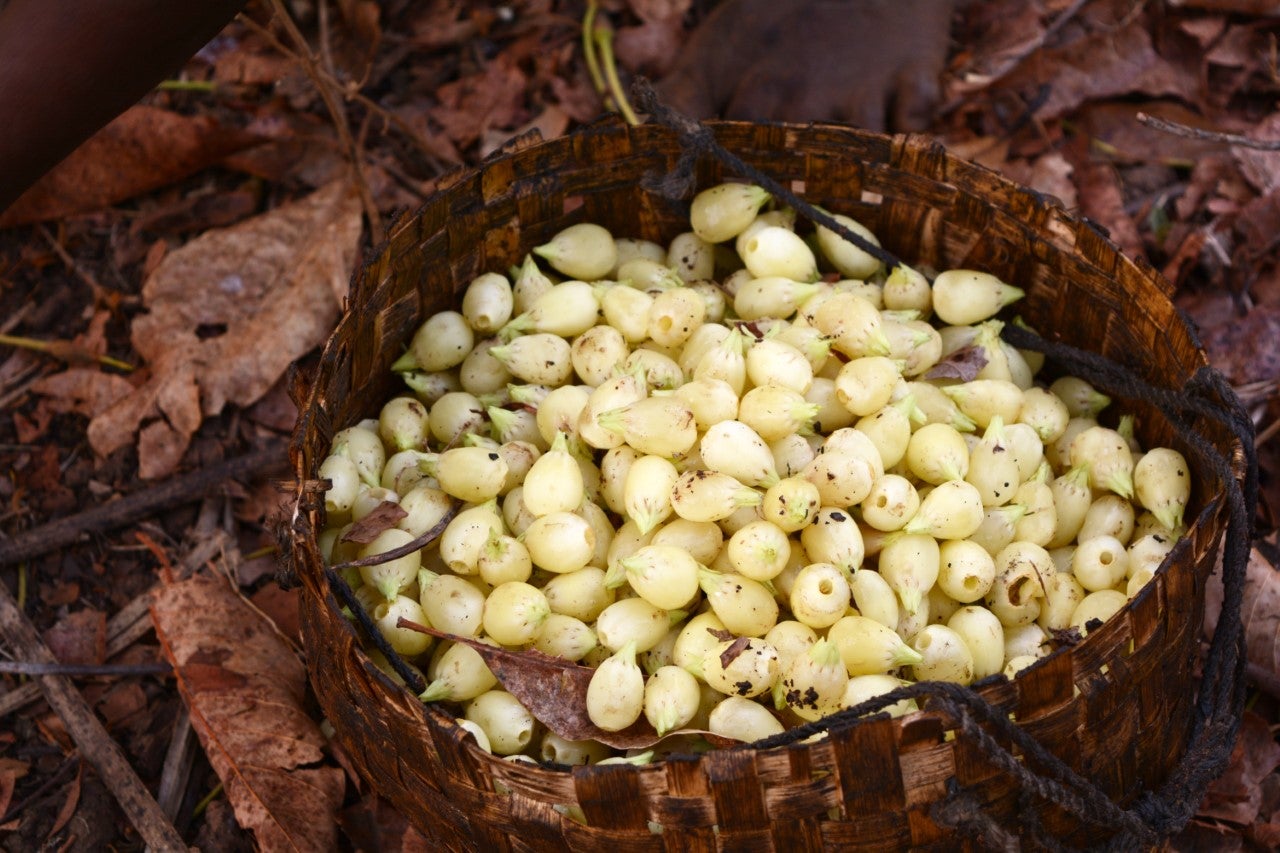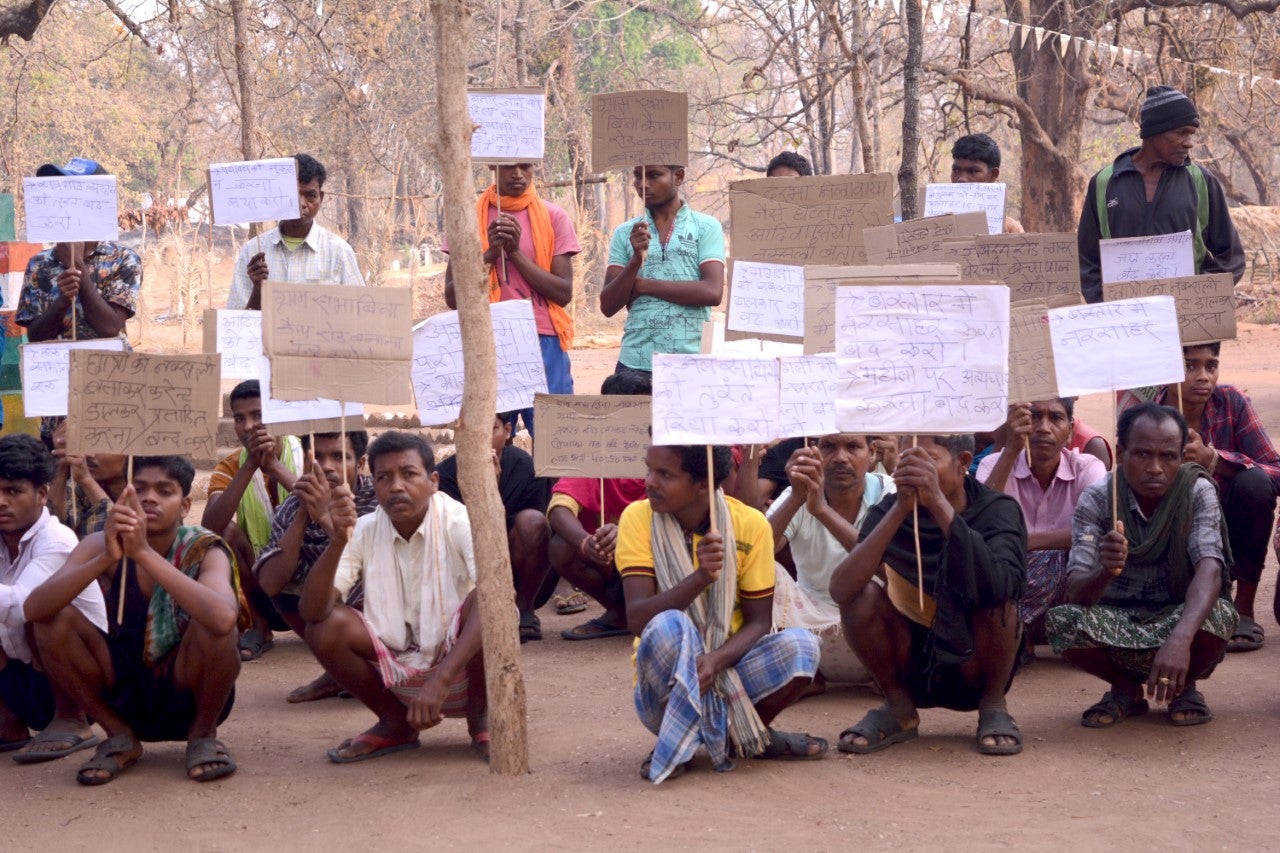The Indian villagers who refuse to let the dead rest
Two years on from Badru Madvi’s death, his family refuse to perform the last rites, claiming he was out picking flowers when he was gunned down by government security forces fighting Maoist rebels in Chhattisgarh. Namita Singh reports from the remote Bastar Range


Your support helps us to tell the story
From reproductive rights to climate change to Big Tech, The Independent is on the ground when the story is developing. Whether it's investigating the financials of Elon Musk's pro-Trump PAC or producing our latest documentary, 'The A Word', which shines a light on the American women fighting for reproductive rights, we know how important it is to parse out the facts from the messaging.
At such a critical moment in US history, we need reporters on the ground. Your donation allows us to keep sending journalists to speak to both sides of the story.
The Independent is trusted by Americans across the entire political spectrum. And unlike many other quality news outlets, we choose not to lock Americans out of our reporting and analysis with paywalls. We believe quality journalism should be available to everyone, paid for by those who can afford it.
Your support makes all the difference.It was about 6am in the morning when Madvi Marko asked her two sons to go and pick mahua flowers from the forests of Dokapur, near their home in the Bastar Range of India’s central Chhattisgarh state.
Like any other family from the tribal communities of this remote and conflict-ridden region, March is the season when they get busy collecting the season’s bloom, which they can sell in the market for 30-40 rupees (30p-40p) per kg. That morning was supposed to be no different for this family, till her younger son Channu Mandavi returned panting and breathless a short while later.
“He told us that the forces killed Badru,” the mother tells The Independent from her home in the village of Gampur, as she breaks down crying. “I ran to the forest with their aunt and grandmother. But they assaulted me as I begged them to give me the body of my dead son.”
Along with several northeastern states, Chhattisgarh is host to a militant insurgency made up of radical communists. Emerging from a 1967 left-wing rebellion in the Naxalbari village of West Bengal and inspired by Chinese revolutionary leader Mao Zedong, these ”Maoist” or “Naxal” fighters have been clashing with the Indian government for more than four decades. The guerilla group claims to defend the rights of indegenous tribes as they attempt to overthrow the state.
On 19 March 2020, Badru, 22, was killed in an “exchange of fire” between Maoists and central and state reserve forces, says P Sundarraj, the inspector general of police serving in the Bastar Range. “In this encounter, a dead body of a Naxal male cadre Badru Mandavi was recovered.”
The family fervently denies the claim. “Badru was not a Maoist or a Naxal,” says Channu, now 12. “He was an innocent tribal who was killed in front of my eyes.”
“My brother was right ahead of me when the officials shot him,” he recalls. “They even shot at me but I somehow escaped.”

Two years on, the family are still demanding an investigation into how their son was killed and the registration of a preliminary chargesheet against the soldiers involved. And knowing the uphill struggle they face against a system with a poor track record for accountability, they have taken an exceptionally rare step – they are refusing to lay Badru to rest.
The young man’s remains have been embalmed with salt and other herbs, wrapped in a shroud and preserved in a two-foot-deep crater in the graveyard located a couple of kilometres from the village. The top of the pit is covered with wooden logs, a tarpaulin sheet and a thin layer of mud.
That means it could resemble any other burial site, except it does not. The plot is marked with an inverted charpoy, a traditional woven bed, and the top is easily removeable so that when the time comes for an investigation, Badru’s preserved remains can be used as evidence. Only then will he receive a traditional funeral.
The family’s actions are unusual because the Gond tribe in this village, like many communities in India, does not normally bury the dead. Bodies are instead cremated, and on the funeral pyre the family burn all the other belongings of the deceased, including their clothes. Badru’s are still swaddled in the corner of a hut, out of sight of his mother, who wells up each time they catch her eye.
The villagers have not entirely done away with all rituals for Badru – they have at least placed a tombstone in his name, right outside the village. But while all the other tombstones are huddled together, his remains isolated on one side of the road, with his loincloth tied to it.
“If we cremate the body, then the proof will be gone,” says Badru’s mother, who remains hopeful that the courts might order a fresh post-mortem. “And therefore, as a family, we have taken the decision to let the body remain as is, till we get justice.”

The family brought their case to Chhattisgarh High Court in March this year, saying they were unable to make the long journey to file the petition earlier due to the Covid-19 pandemic and the resulting restrictions on movement. A hearing is expected soon.
IG Sundarraj says an independent inquiry has already been carried out, in May last year, and found no wrongdoing on the part of the security forces in the case.
“Efforts are [ongoing] to convince the villagers to complete the burial rituals in a traditional way, considering the public health issues” arising from preserving a body in this way, said the police official, while claiming that the case is being politicised by someone “playing mischief and playing with the sentiments of the local population”.
Yet Badru’s case is not the first instance where residents of this village have taken the extreme step of refusing to conduct last rites after a contentious death. The killing is reminiscent of another incident five years ago when two members of the tribal community were shot dead by the military – a young man named Bheema Kadti and a 14-year-old girl, who cannot be named for legal reasons.
The official narrative then was similar: two “members of West Bastar Division Naxal formation” killed in an “exchange of fire”. And like in Badru’s case, the family of the two also denied the claims of the security forces, in turn accusing them of extrajudicial killing.
“They were not Maoist,” the family submitted in court, adding that they were picked up by the military on their way home from the Kirandul market, located about 40km from the village.
“The police held them and tortured them in custody,” a relative told The Independent on condition of anonymity, as he alleged that the teenage girl was sexually assaulted. “They brought them to the hills and murdered them,” he claimed.
Back then, the family preserved the bodies for nearly 40 days, finally cremating them on 8 March 2017 after the court intervened and ordered a second post-mortem. A report was submitted but the findings have never been made public, says IG Sundarraj.

He did not comment on the allegations of torture and sexual assault, but in a written statement told The Independent that a “magisterial inquiry in the matter was completed on 17 November 2017 and nothing adverse was found”.
“I would like to make one point certain,” he tells The Independent , “that this is a typical modus operandi of … Maoists and their sympathisers, to level these allegations against the security forces and to harm the credibility of the security forces.”
A plea from the families of the two individuals, seeking a judicial enquiry, the prosecution of the officials “involved in the killing” and compensation for the families of deceased, remains pending.
Soni Sori, a well-known tribal rights activist who rarely gives media interviews, tells The Independent that she believes it is easier for the security forces in remote areas to cover up atrocities against tribal communities and label the victims Maoist terrorists.
Home to about 400 people, Gampur village is largely disconnected from the outer world. It has no road or other transport facility so can only be reached on foot, trekking through the forest cover and several shallow streams of water. Electricity has not yet reached the village and there are no towers providing a mobile phone network. There is no source of fresh water, either, with villagers digging pits to access groundwater. The nearest school is located in Kirandul, about 40km away. Most children don’t go.
“When the forces commit atrocities against the tribals in these cut-off areas, there is no one to hold them accountable,” says Sori. “There is no one who can go from the cities and hear them out. And since they only speak and understand Gondi, a language that most [members of the] media do not understand, it is easier for the forces to do whatever they want to, as they know no one will raise a voice.”
A number of formal enquiries have given weight to the accusation that ordinary members of the public are being caught up in the military operation to contain left-wing extremism in the region.
A judicial enquiry report probing the killing in 2013 of eight people by the Central Reserve Police Force (CRPF) in Edesmetta, Chhattisgarh, found no proof the villagers killed in the incident were armed. While security forces claimed the incident began with Maoists opening fire, the report concluded that the security personnel “may have opened fire in panic”.
Another judicial enquiry report investigating the 2012 killing of 17 people in the village of Sarkeguda in Bijapur district found there was no evidence to prove they were Maoists, and that “security forces opened fire unilaterally on the members of the meeting, killing and injuring many of them. There was no firing by the members of the meeting.”
But faith in the judicial process has been undermined by the lengthy delays in the publication of these reports – nine and seven years after the incidents respectively – and the fact that there have still been no charges brought against the paramilitary officers involved.
There is no question that the security forces face a real threat in areas with an active Maoist insurgency. A note shared by IG Sundarraj indicates that 1,234 soldiers as well as up to 1,782 local civilians have been killed as a result of the Maoist conflict in Chhattisgarh alone, since the state was formed in the year 2000. Nationwide, up to 3,900 civilians and over 2,600 soldiers have died since the same year, according to data maintained by the South Asia Terrorism Portal.

The government also claims significant successes in reducing the areas of the state where rebels are active, from about 18,000 sq km in 2000 to under 7,000 sq km this year.
More and more police and paramilitary resources are being committed to this end – in the past three years alone, 37 new security camps have sprung up just in the Bastar Range. Each of these camps “acts as an integrated development centre and facilitate[s] development works like road [and] bridge construction, electricity connectivity, mobile connectivity, school and public distribution shops … in the Naxal-affected areas”, said a police statement.
But many locals remain unconvinced the additional security resources are for their benefit alone. Many of the rural areas afflicted by Maoist conflict are also rich in untapped natural resources, and Sori says land grabs provide one explanation for alleged atrocities – locals are accused of being rebels and even killed so their land can be handed over for mining and other exploitation.
Locals cite the excessive width of new roads in the region – 20 metres in places – as evidence that new infrastructure is being built to open up their mountain ranges to heavy mining equipment, not so tribal communities can get their children to school.
“As the security camps come up, the forces not just routinely harass the tribals but also arrest us saying that we are Maoists,” says Ashu Markam, a local protesting against the setting up of police camps and a new road in the village of Bechapal. “They kill our livestock, eat them and whenever we go anywhere within the area, they routinely stop us for questioning.”
“The government claims that with these roads, they will bring development in the region. What development are they talking about? There is one hospital in Bechapal [town] but no doctor sits there. The patients wait and then leave.
“These roads are not for us and we fear they are being built for aiding the mining activities. If the mining begins there, then there would be groundwater pollution. Our agricultural fields would be damaged,” he adds.
“The health of our fields, our animals, and in turn our lives are dependent on these natural resources and therefore, we must protect them,” says Markam. “If more camps come up, we will fight.”
Join our commenting forum
Join thought-provoking conversations, follow other Independent readers and see their replies
Comments